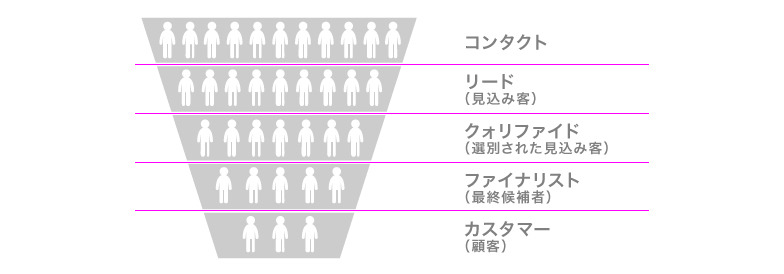Display advertising is becoming mainstream in web marketing. While it offers the advantage of deploying various expressive methods tailored to user attributes, matching it with the right delivery method is also crucial. This time, we asked Mr. Yasuhiro Matsuno and Mr. Hiroyuki Tamura of Nextedge Dentsu Inc. to explain the basics of display advertising and delivery methods that enhance its effectiveness.
*Nextedge Dentsu Inc. became "Dentsu Digital Inc." on July 1, 2016.

■What is "Display Advertising"?
──First, could you tell us about your roles?
Matsuno: I handle operational management and delivery strategy formulation, primarily focused on display advertising. I work directly with clients, reviewing weekly results and making proposals based on those findings. I also actively propose new approaches to solve challenges.
Tamura: I work directly with clients as a strategist. With my extensive experience in display advertising, I'm involved in a wide range of digital advertising operations, including hands-on campaign management.
──You both work with display advertising. What exactly is that?
Matsuno: It refers to the advertising format where image ads are placed within ad slots on websites. Expression methods vary widely, but common types include image ads using static images and ads using Flash or GIF animations with motion effects.
Other types include "dynamic creative," where banners are dynamically generated based on a user's online activity history—for example, seeing ads for the same or similar products on another site after visiting an e-commerce or travel site—and "online video ads," which deliver video content.
──Display ads are distributed across various websites, but what types of companies handle this distribution?
Tamura: For advertising aimed primarily at achieving customer acquisition results online, Google, Yahoo!, and Criteo are the top three players. Facebook dominates in the social media space.
Google's strengths lie in its vast reach—covering 90% of internet users—and its diverse targeting methods leveraging proprietary big data and search engine data. It also offers robust optimization features tailored to advertising goals like reach, conversion, and acquisition.
Yahoo! is Japan's largest search portal, serving as a platform that places ads within its extensive Yahoo! content. Beyond just ad placements, its ad delivery technology is highly accurate, leveraging both content viewing data and Yahoo! ID user data.
Criteo is a leading provider of dynamic retargeting. Dynamic retargeting directly promotes products users recently viewed on a website via banners, resulting in high click-through and conversion rates. Facebook, requiring real-name registration, offers high data accuracy and enables precise communication. It facilitates cross-device targeting (PC, smartphone, tablet) for the same audience, making it highly effective.
■What's the difference between "search ads" and "display ads"?
──We often hear about "search ads" and "display ads." Could you explain their respective characteristics?
Matsuno: Broadly speaking, search ads refer to all managed advertising (including display ads) on the two major platforms: Google AdWords and Yahoo! Promotion Ads. Narrowly defined, they are search-linked ads (SEM) displayed on search results pages. Since ads matching the user's search keywords appear, they reliably capture user needs. However, their expression is text-centric with limited formats.
Display ads, on the other hand, can be delivered to capture user needs at different stages of the sales funnel, or they can be used for broad reach to get in front of a larger audience.

For users at the top of the sales funnel, display ads can be used not only to drive purchases or clicks but also for CSR-like objectives, such as enhancing a company's brand value. In other words, display ads can be delivered with precise messaging tailored to diverse target audiences.

──Tell us about display ad targeting.
Matsuno: Targeting precision is crucial for delivering display ads effectively. Targeting is broadly divided into "person-based" and "surface-based" approaches. "Person-based" targeting can be thought of as pinpointing users based on their attributes.
──How exactly is this targeting done?
Matsuno: There are four main approaches. First is the classic "retargeting." After a user leaves a site, we display display ads across various sites to follow them.
Since they've already visited the client's site, we know they have at least some interest. Seeing the display ad increases the likelihood they'll return to the site. In this case, we can expect effects like re-engagement or purchase promotion. For clients seeking direct results, this has been a mainstream technique for several years now.
──What other targeting methods are there?
Matsuno: "Search targeting" is increasingly common. It displays display ads based on keywords searched on Yahoo! or Google. For example, when Company A runs ads, they want to attract people interested in competitor Company B. This method allows them to target people who have searched for competitor B's name and show them Company A's ads.
A newer approach is "expanded targeting." This method finds people with similar attributes to those who have visited a site, even if they haven't visited it themselves, and displays display ads to them.
Another method is "behavioral targeting," which estimates a user's interests based on sites they've visited in the past and delivers display ads closely aligned with those interests.
■Different targeting methods suit different industries!
──So, are there industries particularly suited to each targeting method?
Tamura: For clients in the staffing/recruitment sector, "search targeting" tends to be a good fit. People considering a job change often exhibit inconsistent website behavior and interests, making it difficult to predict their job-hunting intent. This makes "extended targeting" or "behavioral targeting" less effective. Instead, "search targeting"—which delivers job-related display ads to people searching for keywords like "job change"—is easier to use.
On the other hand, travel and e-commerce sectors have a high degree of interest-based engagement, with many commonalities in user behavior. This makes them well-suited for "expanded targeting" and "behavioral targeting." These two methods improve in accuracy over time as they identify individual attributes more precisely. Continued use over the long term leads to correspondingly better results.

──Among "person-based" targeting methods, which has the highest conversion rate?
Matsuno: "Retargeting" involves ads aimed at bringing back users who are close to clicking or converting. Compared to other display ads, its conversion rate is several times higher. Once they click, the likelihood of purchase is high, so it's a surefire delivery method.
──Then, please tell us about the other targeting method, "surface-based."
Tamura: Simply put, it's about where you place the ads. There are two selection methods. One is the obvious approach: if targeting women, place ads on sites women frequently visit.
The other method is targeting surfaces containing specific keywords. This is called "content matching." For example, specifying the keyword "AKB" will display ads on pages discussing AKB. However, there's a risk of ads appearing on pages with negative content about AKB, so operational measures are needed to avoid this.
──What are the key points to watch out for when targeting?
Tamura: The key to targeting is understanding the client's objectives and setting clear KPIs. You need to clarify whether the goal is to acquire users or increase reach, for example. Defining these objectives helps determine the best distribution channels and compatible targeting methods.

Matsuno: It's also crucial to understand what each platform, like Yahoo! or Google, can offer. While we mentioned "retargeting" and "behavioral targeting" earlier, some platforms allow combining "demographic data × interests," enabling more efficient targeting.
Another point is not to overcomplicate things by narrowing your attribute segments too much from the start. Especially with programmatic display ads, a major feature is seeing results in real time. If a segment isn't performing well, you can immediately stop delivery to it. Therefore, rather than narrowing down too much from the start, it's more efficient to set up many candidate segments initially. Then, observe the real-time effectiveness of each segment and refine your targeting precision by selecting and deselecting delivery options.
However, simply solidifying your targeting isn't enough. It's also crucial to decide on the right delivery channels for your target audience and improve the quality of your creative assets.

■Effective Creative Seizes That Fleeting Moment
──Regarding creative, what aspects are most important?
Matsuno: Since users are navigating websites, any display ad encounter is fleeting. Therefore, eye-catching creative is paramount. Key points to focus on are incorporating messages and mechanisms throughout that encourage users to view or click.
Tamura: It's crucial to refine your approach down to the level of content for display ads based on the depth of the page the user visited—essentially, the stage of the sales funnel.
For example, on a fashion e-commerce site, the content differs depending on whether ads are served to the men's or women's pages. For men, their interests likely vary depending on whether they're viewing pants or jackets. We analyze in detail what kind of display ad creative works best for each scenario. However, the more granular you get, the more it costs, so considering cost-effectiveness is also necessary.
──How does the creative differ based on the stage of the sales funnel?
Matsuno: When trying to attract users who haven't visited the site yet, you might focus on making products stand out or ask questions like "What's your concern?" For retargeting users who have already visited the site once and are in a sales funnel where purchase is likely, you emphasize campaigns or discounts.
Tamura: With current technology, if someone buys shampoo on an e-commerce site, you could display an ad saying "Time to replace your shampoo" when they're running low. But pushing too hard can feel creepy and potentially lead to complaints. Striking that balance will be crucial for future creative work.
(Continued in #2 )











